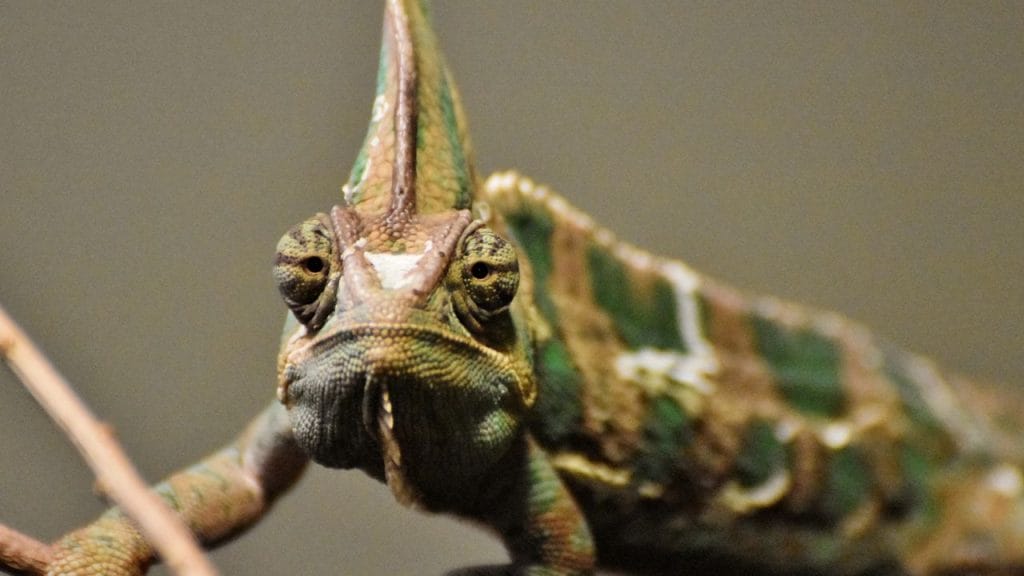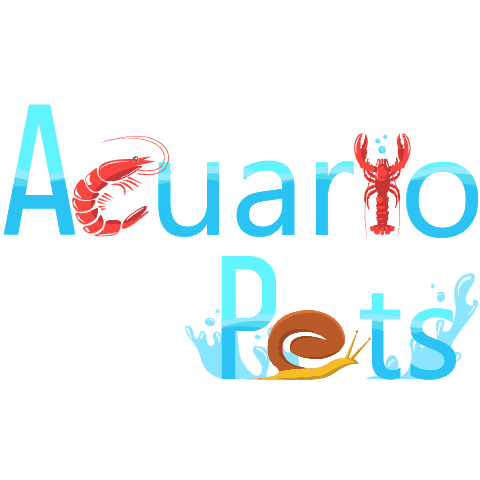This post was created with help from AI tools and carefully reviewed by a human (Muntaseer Rahman) . For more on how we use AI on this site, check out our Editorial Policy.
Check Out These FREE Tools We Made JUST For You!
Complete Veiled Chameleon Care Guide (What They Don’t Tell You)

So you’re thinking about getting a veiled chameleon? Let me stop you right there.
I’m not saying don’t do it—I’m saying you better know what you’re getting into first. These guys are basically the divas of the reptile world, and if you think you can wing it, you’re about to learn an expensive lesson.
Let’s talk real chameleon care.
What Even Is a Veiled Chameleon?
Picture this: a bright green lizard with a pointy helmet on its head that can move its eyes in two different directions at once while changing colors based on its mood.
That’s a veiled chameleon.
Scientifically known as Chamaeleo calyptratus, these guys come from Yemen and Saudi Arabia. Males can grow up to 24 inches long, while females usually top out around 12 inches.
The “helmet” on their head? That’s called a casque, and it’s not just for show—it actually helps funnel rainwater into their mouths when they’re thirsty.
And here’s the part nobody tells you: males can live 6-8 years, but females often don’t make it past 6 because of the whole egg-laying thing (more on that nightmare later).
Are They Good for Beginners?
Short answer: No.
Long answer: Hell no.
Look, pet stores will sell these to anyone with a credit card, but that doesn’t mean you should buy one. Even experienced reptile keepers struggle with chameleons because they’re ridiculously sensitive to everything.
One wrong temperature? Sick chameleon.
Not enough humidity? Dead chameleon.
Glass tank instead of screen? Respiratory infection.
They’re basically the high-maintenance girlfriend of the reptile world, except they can’t tell you what’s wrong—they just get sick and die.
Housing: Where Your Chameleon Actually Wants to Live
Here’s where most people screw up immediately.
Enclosure Size
Babies (0-6 months): Start with a 16″ x 16″ x 30″ screen enclosure. Yes, screen—not glass. We’ll get to why in a second.
Sub-adults (6-12 months): Upgrade to 18″ x 18″ x 36″.
Adult males: You need a 24″ x 24″ x 48″ screen cage minimum. Bigger is always better because these guys are tree dwellers and need vertical space to climb.
Adult females: Can get away with 18″ x 18″ x 36″, but honestly, just go bigger.
Why Screen and Not Glass?
Because chameleons are prone to respiratory infections, and glass tanks turn into humid death traps with stagnant air.
Screen cages provide the airflow they desperately need to stay healthy. Plus, chameleons don’t understand reflections—if you put them in a glass tank, they’ll see their reflection and think it’s another chameleon, which stresses them out until they literally die from stress.
Not even exaggerating.
The only exception is if you live in the Sahara Desert where humidity is basically zero—then you might need glass. But for 99% of people, screen is the way to go.
Setting Up the Inside
Think of it as building a mini tree habitat.
Branches: Get branches of different widths and secure them at various heights. Chameleons need to exercise their grip, and they like having options for temperature regulation.
Live plants: Pothos, ficus, hibiscus, and schefflera plants are all safe. Plus, chameleons will occasionally munch on the leaves.
Vines: Add some flexible vines to create “walkways” between branches. Make sure everything is secure because chameleons have delicate bodies and falls can be devastating.
No substrate needed: Just use paper towels or leave the bottom bare. You want to be able to see their poop to monitor their health.
The goal? Dense foliage on one side for hiding, open branches on the other side for basking. More hiding spots = happier chameleon.

Temperature and Lighting: Don’t Cheap Out Here
This is where people kill their chameleons without meaning to.
Temperature Zones
You need a temperature gradient so your chameleon can move between warm and cool areas.
Basking spot: 90-95°F (use an incandescent bulb or ceramic heater)
Cool side: Around 70°F
Night temperature: Can drop to 65-70°F (turn off the heat lamp at night—they need the temperature drop)
Get two thermometers—one for each end of the cage. Check them daily. This isn’t optional.
UVB Lighting: The Life or Death Decision
Here’s the thing that pet stores won’t tell you: without proper UVB lighting, your chameleon will develop Metabolic Bone Disease (MBD) and die a slow, painful death.
You need a 5.0 UVB bulb (ReptiSun or Arcadia brands only—trust me, brand matters here) in a T5 HO fixture spanning the length of the enclosure.
Place your basking branch 6-8 inches below the UVB bulb. This is critical for proper UV exposure.
Oh, and one more thing: UVB bulbs lose effectiveness after 6 months even though they still produce light. Mark your calendar and replace them every 6 months without fail.
Light Schedule
12 hours on, 12 hours off. Set it on a timer so you don’t forget.
Chameleons are diurnal (active during the day), so they need that consistent day-night cycle.
Humidity and Hydration: The Silent Killer
Dehydration is the #1 cause of death in pet chameleons. Let that sink in.
Humidity Requirements
During the day: 50-70%
At night: Can go up to 75-90%
Get a hygrometer (humidity gauge) and actually use it.
The Water Situation
Here’s what makes chameleons annoying: they don’t drink from water bowls.
In the wild, they drink dew and rain off leaves. In captivity, you need to replicate that with misting and drippers.
Misting: Use an automatic misting system (like MistKing) set to mist 2-3 times daily for 2-5 minutes each session. Or get really good at hand-misting every morning and evening.
Dripper system: Set up a dripper that creates moving water droplets on leaves. Chameleons recognize movement as “safe to drink.”
Pro tip: That casque on their head? It’s literally designed to funnel water into their mouth. Nature is wild.
How to Tell If They’re Dehydrated
Check their urates (the white part of their poop):
- White urates: Properly hydrated
- Yellow urates: Needs more water
- Orange urates: Severely dehydrated—vet NOW
Other signs: sunken eyes, lethargy, sagging skin, weight loss.
Feeding: What Goes in the Mouth
Veiled chameleons are insectivores, which means bugs, bugs, and more bugs.
The Feeder Insect Lineup
Staple feeders (feed regularly):
- Crickets
- Dubia roaches (highly recommended—high protein, low fat)
- Black soldier fly larvae
- Silkworms
- Locusts
Occasional treats (1-2 times per week max):
- Hornworms (chameleons go crazy for these)
- Superworms
- Waxworms (these are like candy—high fat)
Never feed:
- Wild-caught insects (pesticides and parasites)
- Fireflies (toxic)
- Anything bigger than the width of your chameleon’s head
Feeding Schedule
Babies (0-6 months): Feed daily—as much as they’ll eat. They’re growing machines.
Juveniles (6-12 months): Feed daily, around 7-10 appropriately-sized insects.
Adults: Here’s where it gets specific:
- Males: 3-5 insects every other day
- Non-gravid females: 3-5 insects every other day
- Gravid (pregnant) females: Feed daily until they lay eggs
The female problem: If you overfeed females, they’ll produce massive clutches of 60-100 eggs instead of the healthy 20-30, which can kill them through egg binding. This is not a joke.
Gut-Loading: The Secret Sauce
Whatever your feeder insects eat, your chameleon eats. So feed your bugs good food 24-48 hours before feeding them to your chameleon.
Good gut-loading foods:
- Collard greens
- Mustard greens
- Kale
- Carrots
- Sweet potato
- Commercial gut-loading products
Don’t use: Iceberg lettuce (no nutritional value), onions, or high-protein dog/cat food.
Supplements: The Non-Negotiable Part
You need three types of supplements:
- Calcium WITHOUT D3 (every feeding for growing chameleons, 3-4 times weekly for adults)
- Calcium WITH D3 (2 times per month)
- Multivitamin powder (2 times per month)
To dust insects: toss them in a bag with powder, shake gently, feed immediately.
Can They Eat Plants?
Veiled chameleons are one of the few chameleon species that will occasionally munch on vegetation.
Safe options (offer sparingly, once a week max):
- Collard greens
- Mustard greens
- Dandelion leaves
- Pothos leaves (yes, from their own plants)
- Small amounts of fruits like strawberries, blueberries, mango
This is supplementary only—insects should still be 90% of their diet.
Health Problems: What Can Go Wrong (And Will)
Let’s talk about the ways your chameleon can suffer if you mess up.
Metabolic Bone Disease (MBD)
This is the big one. Veiled chameleons are the most commonly affected species by MBD.
Causes:
- No UVB lighting or wrong bulb strength
- Insufficient calcium in diet
- Old UVB bulbs that stopped producing UV
Symptoms:
- Curved or bent legs
- Soft jaw/mouth won’t close properly
- Grabbing at their own legs or head
- Weak grip, frequent falls
- Broken bones from minor bumps
- Stunted growth
- Decreased tongue function
The brutal truth: Once MBD sets in, the damage is permanent. You can stop it from getting worse, but those bent legs? They’re staying bent.
Treatment: Vet immediately. They’ll need calcium injections, proper UVB, and dietary changes. But honestly, just prevent it in the first place.
Dehydration
Already covered this, but it’s worth repeating because it’s the #1 killer.
If you see orange urates or sunken eyes, increase misting immediately and get to a vet if it doesn’t improve fast.
Respiratory Infections
Causes:
- Glass enclosures with poor ventilation
- Too much humidity without airflow
- Temperature too cold
- Smoke exposure (cigarettes will kill them)
Symptoms:
- Mouth hanging open constantly
- Wheezing or labored breathing
- Mucus around nose or mouth
- Lethargy
Prevention: Use screen cages, maintain proper temps, keep them away from smoke.
Gout
This happens when chameleons can’t process protein properly, usually from dehydration or kidney issues.
Symptoms:
- Swollen joints
- Limping
- Lethargy
- Not eating
Prevention: Proper hydration and don’t overfeed high-protein insects. Make sure your feeders are eating vegetables, not dog food.
Gular Edema
Fluid swelling in the throat area, usually from over-supplementing vitamins A and D3.
Remember when I said to only give calcium with D3 twice a month? This is why.
Egg Binding (Females Only)
Female veiled chameleons can produce eggs even without mating. If they don’t have a proper place to lay them, they’ll die from egg binding.
You MUST provide a lay bin for any female:
- 12″ x 12″ x 12″ minimum size
- Fill with 50% moist play sand and 50% organic topsoil
- Mix should hold its shape when squeezed but not drip water
- Keep it in the enclosure at all times
Signs she’s ready to lay:
- Pacing and digging behavior
- Color changes
- Decreased appetite
- Restlessness
Why this matters: If you overfeed a female, she’ll produce 60-100 eggs instead of 20-30, and larger clutches significantly shorten her lifespan or cause fatal egg binding.
Handling: Just Don’t
Chameleons are “look, don’t touch” pets.
They hate being handled and find it incredibly stressful. Some individual chameleons tolerate it better than others, but most will hiss, gape their mouths, and even bite.
When you must handle them (for cage cleaning or vet visits):
- Let them walk onto your hand rather than grabbing them
- Move slowly and calmly
- Keep handling to an absolute minimum
- Never grab them from above (predators attack from above)
Their stress hormones can stay elevated for up to a week after handling, which suppresses their immune system and makes them sick.
Personality Notes
Veiled chameleons are known for having dramatic, cranky personalities. They’re often aggressive or shy, and friendly individuals are rare unicorns.
This is normal. They’re supposed to be grumpy. Don’t take it personally.
The Female Situation: Why Males Are Easier
Let’s be brutally honest: female veiled chameleons are harder to keep alive.
Even without mating, females will produce eggs, which is incredibly taxing on their bodies. Most females don’t live past 6 years because of this.
If you’re a beginner, get a male. They’re larger, more colorful, live longer, and don’t have the egg-laying complications.
How to tell males from females:
- Males have a much larger casque
- Males have tarsal spurs on their back feet
- Males get much brighter colors
Shopping List: What You Actually Need
Let’s talk money because this isn’t cheap.
Enclosure:
- 24″ x 24″ x 48″ screen cage: $150-200
- Branches and vines: $30-50
- Live plants: $40-80
Lighting:
- T5 HO fixture with 5.0 UVB bulb: $60-100
- Basking bulb and dome: $20-30
- Timer: $10
Hydration:
- Automatic misting system (MistKing): $100-150
- Dripper: $15-30
Feeding:
- Feeder insects: $20-40 monthly
- Supplements (calcium and vitamins): $30-50
- Gut-loading food: $10-20 monthly
Monitoring:
- Thermometers (2): $15-20
- Hygrometer: $10-15
Optional but recommended:
- Lay bin supplies (if female): $20
- Solarmeter 6.5 (for measuring UVI): $250 (not cheap but super useful)
Total startup cost: $500-800 minimum, plus $60-100 monthly for food and supplies.
Daily Care Routine: What You’re Signing Up For
Morning (10 minutes):
- Turn on lights (or use a timer)
- Check temperatures and humidity
- Morning misting session (if manual)
- Check water dripper
- Feed insects (if it’s a feeding day)
Throughout the day:
- Automatic mister runs its cycles
- Dripper keeps water moving
Evening (5 minutes):
- Evening misting session (if manual)
- Remove any uneaten insects
- Spot-clean any poop
- Turn off lights (or use a timer)
Weekly tasks:
- Full cage cleaning
- Refill misting system reservoir
- Order more feeder insects if needed
- Check UVB bulb date
Monthly tasks:
- Replace UVB bulb every 6 months (mark your calendar)
- Trim plants if needed
- Deep clean all branches and decorations
The Bottom Line
Veiled chameleons are gorgeous, fascinating creatures that will teach you patience, attention to detail, and the meaning of “high maintenance.”
They’re not starter reptiles. They’re not “fun” pets in the traditional sense. You can’t cuddle them, play with them, or really interact with them much at all.
But if you do it right? You get to watch one of nature’s most incredible animals display behaviors that have evolved over millions of years. You get to see them hunt with their lightning-fast tongues, change colors based on mood, and move with that distinctive chameleon swagger.
Just know what you’re getting into first.
Before you buy:
- Research for at least a month
- Have the entire setup ready and running before bringing the chameleon home
- Find a reptile vet in your area BEFORE you need one
- Accept that you’re about to spend $500-800 upfront and $60-100 monthly
- Understand that this is a 6-8 year commitment
- Be honest about whether you can handle the daily care routine
If you’re still interested after all this? Then welcome to the chameleon keeper club. We’re a slightly obsessive bunch who spend way too much time adjusting humidity levels and watching our pets pretend we don’t exist.
But we wouldn’t have it any other way.
About Author
Hello, I’m Muntaseer Rahman, the owner of AcuarioPets.com. I’m passionate about aquarium pets like shrimps, snails, crabs, and crayfish. I’ve created this website to share my expertise and help you provide better care for these amazing pets.
Disclaimer
This site is owned and operated by Muntaseer Rahman. AcuarioPets.com is a participant in the Amazon Services LLC Associates Program, an affiliate advertising program designed to provide a means for sites to earn advertising fees by advertising and linking to Amazon.com. This site also participates in other affiliate programs and is compensated for referring traffic and business to these companies.

